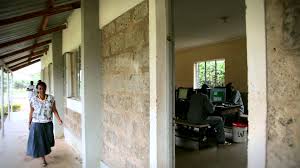Government Grants
Business Grants
Home Owner Programs
Federal Programs
About Us
Structured Decision Making Framework Community of Practice Seminar
The Structured Decision Making Framework (SDMF) Tool was developed by Ralph Serin of Carleton University.
SDMF is an empirically validated model for helping parole boards make high-quality parole decisions.
As its name suggests, the framework provides a structure for making decisions.
It does this through the use of relevant factors, which are conditions or behaviors determined by evidence-based research to influence a person’s propensity to engage in crime after release.
Because the framework relies on evidence rather than subjective criteria, it can help parole boards demonstrate a commitment to making objective, non-arbitrary release decisions.
NIC has developed specialized technical assistance for parole boards to help them integrate the SDMF into their current practices.
This “onboarding” combines readiness assessments, implementation planning, training, and coaching to ensure parole boards have the capacity and ability to use the tool.
To date, NIC has assisted twelve states in adopting the SDMF model.
All evidence-based models require the regular examination of recent and ongoing information, data, and training to ensure positive outcomes.
Fidelity to a model increases the likelihood that those who use it will consistently obtain the same results.
It is a reflection of the extent to which skills and attitudes are acquired and can be transferred to the changing working environment.
A community of practice will be used to foster fidelity and ongoing examination of the tool among practitioners.
A community of practice (CoP) is based on social learning theory whereby members of a group transfer knowledge and improve practices in real time by interacting with others in the same group.
Engaging in an SDMF CoP can help group members improve their efficacy in using the tool and prevent parole boards from “project drift” where practices/processes change from the original model intent.
This increases fidelity.
SDMF is an empirically validated model for helping parole boards make high-quality parole decisions.
As its name suggests, the framework provides a structure for making decisions.
It does this through the use of relevant factors, which are conditions or behaviors determined by evidence-based research to influence a person’s propensity to engage in crime after release.
Because the framework relies on evidence rather than subjective criteria, it can help parole boards demonstrate a commitment to making objective, non-arbitrary release decisions.
NIC has developed specialized technical assistance for parole boards to help them integrate the SDMF into their current practices.
This “onboarding” combines readiness assessments, implementation planning, training, and coaching to ensure parole boards have the capacity and ability to use the tool.
To date, NIC has assisted twelve states in adopting the SDMF model.
All evidence-based models require the regular examination of recent and ongoing information, data, and training to ensure positive outcomes.
Fidelity to a model increases the likelihood that those who use it will consistently obtain the same results.
It is a reflection of the extent to which skills and attitudes are acquired and can be transferred to the changing working environment.
A community of practice will be used to foster fidelity and ongoing examination of the tool among practitioners.
A community of practice (CoP) is based on social learning theory whereby members of a group transfer knowledge and improve practices in real time by interacting with others in the same group.
Engaging in an SDMF CoP can help group members improve their efficacy in using the tool and prevent parole boards from “project drift” where practices/processes change from the original model intent.
This increases fidelity.
Obtain Full Opportunity Text:
NIC Website
Additional Information of Eligibility:
NIC invites applications from nonprofit organizations (including faith-based, community, and tribal organizations), for-profit organizations (including tribal for-profit organizations), and institutions of higher education (including tribal institutions of higher education).
Recipients, including for-profit organizations, must agree to waive any profit or fee for services.NIC welcomes applications that involve two or more entities; however, one eligible entity must be the applicant and the others must be proposed as subrecipients.
The applicant must be the entity with primary responsibility for administering the funding and managing the entire program.
Full Opportunity Web Address:
http://grants.nih.gov/grants/guide/pa-files/PA-21-268.html
Contact:
Agency Email Description:
Application or form information
Agency Email:
Date Posted:
2021-07-02
Application Due Date:
Archive Date:
2021-09-15
Social Entrepreneurship
Spotlight
When it Comes to Social Enterprises, Failure is the Best Platform for Innovation

In the world of social enterprises, failure is a cringe-worthy moment nobody wants to talk about. But, social entrepreneurs can benefit from their failures.

